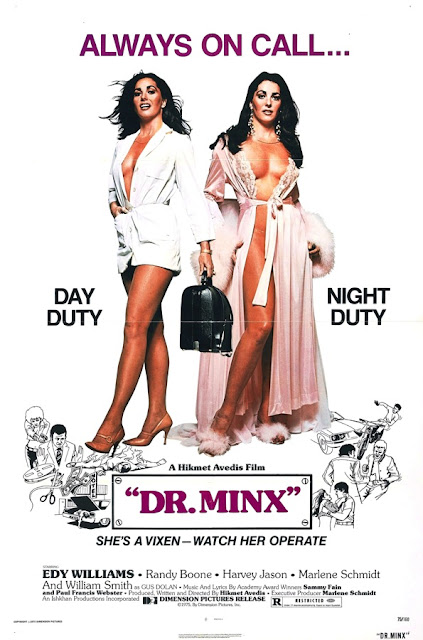A grimy action picture
with elements of horror, Bare Knuckles
edges into so-bad-it’s-good terrain almost from the first frames, during which
funk guitars and twisting synthesizer notes congeal over poorly shot views of a
city at night. Then, once the story begins, shoddy filmmaking and stupid
plotting merge into crap-cinema bliss. Zachary Kane (Robert Viharo) is a badass
bounty hunter with a porn-star perm who spends his downtime playing the flute
and practicing karate. When Zachary hears about a big reward for the capture of
a psychopath who’s been murdering women all across town, he begins his search.
That is, after hooking up with beautiful socialite Jennifer (Sherry Jackson).
How do they meet? While picking up dinner at Pizza Hut, Zachary spots Jennifer,
who is wearing a fur coat, quarreling with her asshole boyfriend, so he tells
the guy to take a hike and then plies Jennifer with a slice of
sausage-and-mushroom pie. Faster than you can say “acid reflux,” the movie cuts
to Jennifer climbing out of Zachary’s bed with his shirt over her body for
modesty. Hilariously bad pillow talk ensues. Lest this detail get overlooked,
remember she wore a fur coat to a date at
Pizza Hut.
Things get even sillier once the movie introduces the killer,
Richard Devlin (Michael Heit). He’s a compact trust-fund kid, recently released
from a mental institution, who dresses up on a BDSM-style leather outfit to
attack women, and he has the strange habit of hissing like a cat. (Lots of hissing occurs during Richard’s martial-arts practices with his
butler/sensei, because doesn’t every good household have one of those?) And then there’s Richard’s mother, a drunken rich bitch who
seems oblivious to the ways in which her own depravity exacerbates her kid’s
mental illness. When she tries to curtail his homicidal hobby, Richard replies
as follows: “You will go on as everything was—Sunday brunch and sex orgies,
just like always, won’t you, Mother?” After which he French-kisses her. Bare Knuckles isn’t one of those
go-for-broke bad movies where one insane thing after another happens; rather,
it’s a laughably wrongheaded attempt at making drive-in pulp. That someone
thought any of this would work is amazing.
Incidentally, Bare Knuckles may be the worst-looking movie ever shot by
celebrated cinematographer Dean Cundey—not only are some shots out of focus, but
half the footage looks like it got fogged in the lab.
Bare Knuckles: FUNKY
















